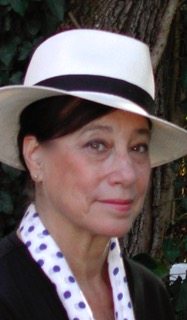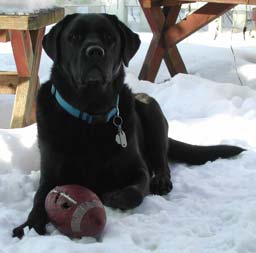Hi
everyone,
 Today I’m sharing a look at the making of
my historical romance, Dangerous Indenture. I’ll discuss how
the book came about, the research involved, and how I created these unique
characters.
Today I’m sharing a look at the making of
my historical romance, Dangerous Indenture. I’ll discuss how
the book came about, the research involved, and how I created these unique
characters.
As most readers know, I write romances in
nearly every genre: contemporary, historical, fantasy, gay, and paranormal.
When I write historical romances I never know where (or when) my story will
take me. Redemption from a Dark Past is set in the kingdom of Hungary, Loving
a Wild Stranger is a pioneer romance set in 1823, and Dangerous
Indenture is a sensual historical/mystery
set in Pennsylvania Colony in the early 1700s.
Here’s the book summary and links:
Dangerous
Indenture
Indentured for five
years… how long can Shauna resist her master’s son?
Desperate
to escape her past in Ireland, Shauna Farrow signs on to become an indentured
servant to Joshua Stewart, a wealthy man in Pennsylvania Colony. But a life of
servitude quickly turns to drudgery, and Shauna’s hopes for starting over and
creating a better life for herself are waning—until she meets her master’s
roguish son, Ashton.
Ashton needs to redeem
himself in his father’s eyes and earn the respect he has always longed for.
Meeting Shauna turns his life around, and he sets out to win her heart. Torn
between propriety and passion, Shauna struggles against her growing attraction
to Ashton as long as she can.
But amidst their flirting,
something dark stirs. Shauna soon discovers why no other servants wanted to
work for the strange Stewart family.
Stewart House has an unsavory
reputation: a previous servant died there under mysterious circumstances. When
another servant goes missing in the middle of the night, Shauna is convinced
that a member of the family is responsible.
Shauna’s investigation leads her close to the
truth, and yet, she’s not sure who she can trust. Events take a deadly turn
when she confronts the murderer and discovers the mystery of the Stewart
family.
Will
Shauna be rescued before time runs out, or will she meet with the same fate as
the other servants?
You can order Dangerous Indenture here:
Amazon: https://www.amazon.com/dp/B07PJVQ7XJ
All other platforms: https://books2read.com/u/3JyROP
***
So, how did the novel come about? Dangerous Indenture is one of those
books that just jumped into my head. (Yes, every so often that happens to
writers.) One day, I overheard the name Shawna Farrell, but I thought I’d heard
Shauna Farrow. The name stuck with me and I wrote it down.
A few minutes later, I knew all about her:
she was an Irish indentured servant who came to Pennsylvania Colony and worked
at a house where a previous servant was murdered. Once I knew that, I started
outlining the book.
Before I wrote a word, I did a lot of
research. I was starting from a good place with the book—I knew where I wanted
to set the story and in approximately what timeframe it should take place.
From there, I spent time in the library
going through history books, reading up on Colonial times (What life was like, what
people wore, ate, etc.) and indentured servants (Where did they come from? Why
did they leave their home country?).
As I wrote, I incorporated my research as
background information. This gives the book a rich, historical feel without
going overboard with details that slow down a scene or are of no interest to
readers.
When I’m writing historical romances, I
include details and descriptions that are integral to the story. I don’t bog
down the plot with a step-by-step procedure for churning butter or how to
saddle a horse, and I don’t go into an endless description of how to unfasten a
corset (unless it’s befuddling a hero who is eager to remove it!)
And just because historical romances are
set in time periods before cars, the Internet, and cell phones, that doesn’t
(or shouldn’t) make them boring. My
historicals include plenty of action, adventure, intrigue, danger, comedy, and
sensual love scenes.
When I wrote Dangerous Indenture, I especially enjoyed creating the characters
and setting the stage for the drama that’s about to unfold. Right from the
start, we’re told that Stewart House is a place to be wary of, and then we (and
Shauna) meet the master of the house, Joshua Stewart, and his strange family.
Our hero, Ashton Bailey, is flawed and has
a lot of problems to overcome. For starters, he’s known as the black sheep of
the family and has been sent home in disgrace. He has a reputation as a
drunkard and a womanizer, and tends to get himself into troubling situations.
By giving Ashton all this “baggage” I made him vulnerable and provided him with
lofty goals to reach.
Shauna has come to the Colonies to start
over and make a new life for herself. The last thing she wants is to fall in
love with anyone—and then she meets Ashton. Shauna is headstrong and
independent, and not your typical heroine. She’s brash and opinionated and
falls in love with Ashton despite all of his socially unacceptable flaws. Ashton
gives her the strength and encouragement she needs to keep going when things
look bleak, and he stands up for her at a critical plot point in the story.
When I developed the secondary characters,
I made sure to give them all interesting backstories and unusual quirks. Joshua
comes off as a mean bear of a man, Minerva just might be crazy (and a
murderer), Colin is… a villain in many senses of the word, and Lila thought she
had everything going for her—for a while. Not everyone in Stewart House is as
they seem, however, and this adds another level of mystery and intrigue to the
book.
I love the characters and the fact that Dangerous Indenture is a romance blended
with mystery. I had never written a romance set in Colonial times before, and combining
all these elements into this Gothic-type story was a lot of fun.
I hope you enjoyed this inside look at the
making of Dangerous
Indenture. I welcome
comments and questions from readers. Be sure to follow my blog for the latest
updates and visit me on social media.
Happy Reading,
Kelli
A. Wilkins
ABOUT THE AUTHOR
 Kelli A. Wilkins
is an award-winning author who has published more than 100 short stories, 19
romance novels, 5 non-fiction books, and 2 online writing courses. Her romances
span many genres and heat levels, and she’s also been known to scare readers
with her horror stories.
Kelli A. Wilkins
is an award-winning author who has published more than 100 short stories, 19
romance novels, 5 non-fiction books, and 2 online writing courses. Her romances
span many genres and heat levels, and she’s also been known to scare readers
with her horror stories.
Her
historical romance, Dangerous Indenture, was released in March
2019. This full-length novel is set in Pennsylvania Colony and blends a sensual
romance with mystery and suspense.
She published the second half of her flash fiction series, Cupid’s Schemes, in early
2019. These two volumes of lighthearted mini-romances are perfect reads for a
quick lunchtime escape or an after-work indulgence.
Kelli released her
latest Teachable mini-course, Fiction Basics: Finding Ideas in
February 2019. She authored Fiction Writing for
Beginners through Teachable in 2018. These courses are
perfect for anyone who wants to learn how to write.
If you like horror
fiction, don’t miss her latest novella, Nightmare in the North.
CATCH UP WITH KELLI
Facebook Historical Romances:

 Today I’m sharing a look at the making of
my historical romance, Dangerous Indenture. I’ll discuss how
the book came about, the research involved, and how I created these unique
characters.
Today I’m sharing a look at the making of
my historical romance, Dangerous Indenture. I’ll discuss how
the book came about, the research involved, and how I created these unique
characters. Kelli A. Wilkins
is an award-winning author who has published more than 100 short stories, 19
romance novels, 5 non-fiction books, and 2 online writing courses. Her romances
span many genres and heat levels, and she’s also been known to scare readers
with her horror stories.
Kelli A. Wilkins
is an award-winning author who has published more than 100 short stories, 19
romance novels, 5 non-fiction books, and 2 online writing courses. Her romances
span many genres and heat levels, and she’s also been known to scare readers
with her horror stories.
 in his next book, "Casting Stones." Set in Greece during the 1985 elections, the historical novel pits the United States against the Soviet Union in a battle over Greece's future political economic soul.
The novel is set in the turbulent times of airline hijackings, terror bombing and assassinations. The Soviet KGB, Greek secret police and terrorists all conspire against Mark Young as he tries to win a national election while simultaneously rescuing the most valuable ancient sculpture ever created.
Mark is torn between the turmoil in Greece and a critical situation threatening to end his relationship with his girlfriend, Vicki back in Washington, D.C. All of these diverse threads come together in an unexpected and thrilling conclusion.
Buy on
in his next book, "Casting Stones." Set in Greece during the 1985 elections, the historical novel pits the United States against the Soviet Union in a battle over Greece's future political economic soul.
The novel is set in the turbulent times of airline hijackings, terror bombing and assassinations. The Soviet KGB, Greek secret police and terrorists all conspire against Mark Young as he tries to win a national election while simultaneously rescuing the most valuable ancient sculpture ever created.
Mark is torn between the turmoil in Greece and a critical situation threatening to end his relationship with his girlfriend, Vicki back in Washington, D.C. All of these diverse threads come together in an unexpected and thrilling conclusion.
Buy on  By writing fiction, I’ve try to expand on my history and the events I have observed. I still have a long way to go in tapping into all of that rich material, particularly since politics and entertainment so often go hand in hand, as I hope I have demonstrated in my work. These will be exciting areas for me
By writing fiction, I’ve try to expand on my history and the events I have observed. I still have a long way to go in tapping into all of that rich material, particularly since politics and entertainment so often go hand in hand, as I hope I have demonstrated in my work. These will be exciting areas for me About E. J. Wagner Crime-historian / storyteller E. J. Wagner is the author of a book of scientific entertainment entitled The Science of Sherlock Holmes which was published by John Wiley & Sons and won the 2007 Edgar® award for the Best Critical/Biographical Book published in 2006.
About E. J. Wagner Crime-historian / storyteller E. J. Wagner is the author of a book of scientific entertainment entitled The Science of Sherlock Holmes which was published by John Wiley & Sons and won the 2007 Edgar® award for the Best Critical/Biographical Book published in 2006.
 As a freelance lecturer and consultant, E. J. Wagner has designed and presented programs on the history of forensic science since 1982 for the Museum of Long Island Natural Sciences, located on the campus of Stony Brook University, as well as at other venues. The purpose of these programs is to:
As a freelance lecturer and consultant, E. J. Wagner has designed and presented programs on the history of forensic science since 1982 for the Museum of Long Island Natural Sciences, located on the campus of Stony Brook University, as well as at other venues. The purpose of these programs is to: